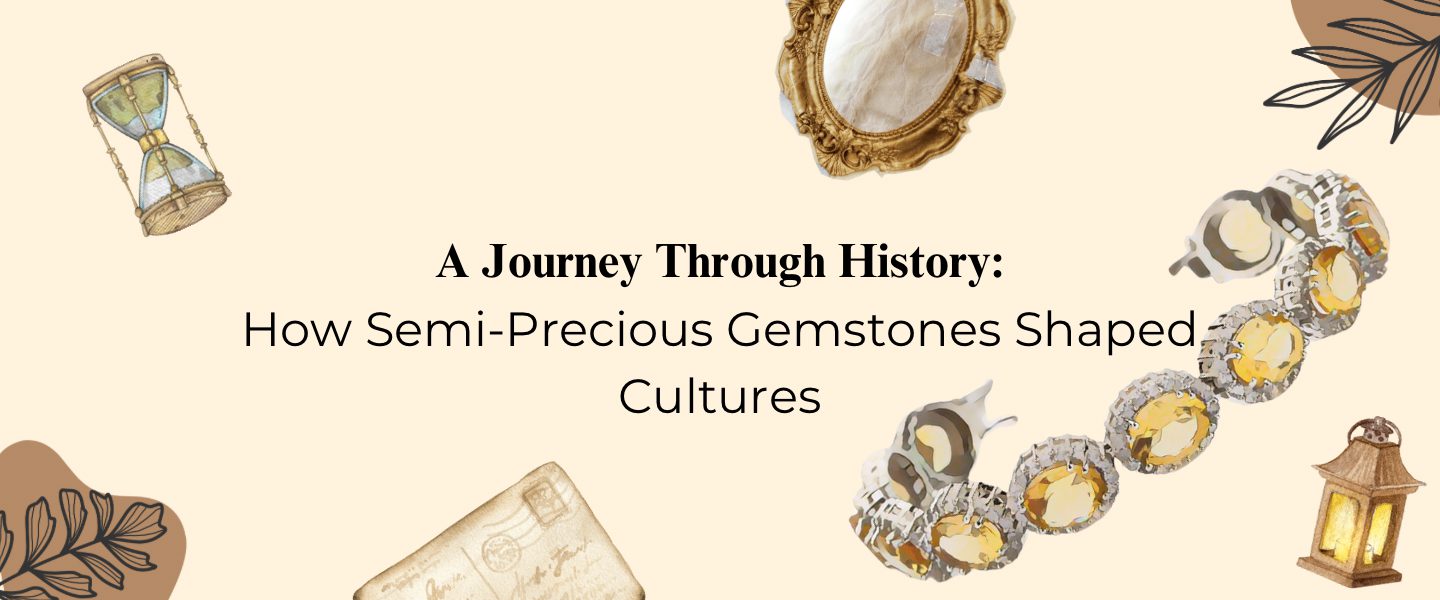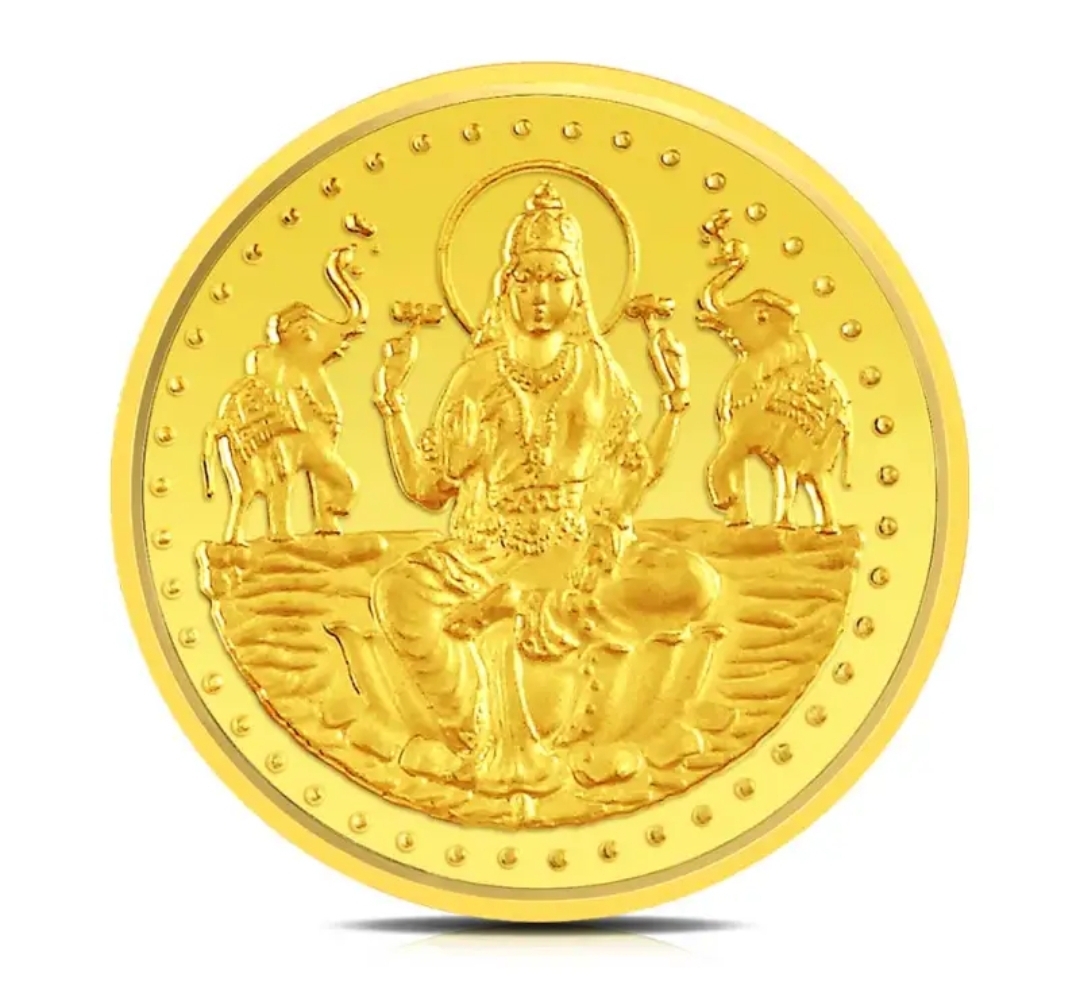Introduction
Semi-precious gemstones have been treasured by humanity for thousands of years, not just for their beauty, but for the profound influence they’ve had on various cultures around the world. These stones have been more than mere adornments—they’ve served as symbols of power, spirituality, and connection to the divine. From ancient civilizations to modern times, the role of semi-precious gemstones in shaping cultures is as fascinating as the stones themselves.
At Varnium by JMT, we appreciate the deep historical significance of the gemstones we use in our jewellery. This blog will take you on a journey through history, exploring how semi-precious gemstones have shaped cultures across different eras and regions, influencing everything from religion to art, and even governance.
Ancient Civilizations: The Birth of Gemstone Reverence
The story of semi-precious gemstones begins in ancient times, where they were first recognized not only for their beauty but for their perceived mystical properties. Different civilizations attributed various meanings to these stones, embedding them deeply into their cultural practices.
- Ancient Egypt: Stones of the Gods In ancient Egypt, gemstones were intertwined with religion and the afterlife. Stones like lapis lazuli, turquoise, and carnelian were considered sacred and were often used in amulets, burial items, and the regalia of the pharaohs. Lapis lazuli, in particular, was associated with the heavens and was often used in the burial mask of Tutankhamun, symbolising protection in the afterlife.
- Egyptians believed that these stones had protective properties, safeguarding the wearer against evil spirits and illness. They also believed that gemstones could serve as a conduit to the gods, with certain stones used in rituals to invoke divine blessings.
- Mesopotamia: The Dawn of Gemstone Crafting The Mesopotamian civilization, often credited with the invention of writing and the wheel, also played a crucial role in the early development of gemstone craftsmanship. Gemstones were used to create intricate seals, which were both functional and decorative. These seals, often made from agate or lapis lazuli, were used to authenticate documents and to symbolise the authority of the wearer.
- The Mesopotamians also believed in the protective and healing properties of gemstones. They crafted amulets and talismans, which were thought to guard against evil forces. The prominence of gemstones in Mesopotamian culture underscores their significance in both everyday life and religious practices.
- India: Gemstones as a Link Between the Earth and the Divine In India, gemstones have long been seen as powerful symbols with deep spiritual and astrological significance. Ancient texts like the Vedas reference gemstones as instruments of power and protection. Stones like turquoise, moonstone, and garnet were believed to influence the wearer’s destiny, often used in rituals and worn as talismans to attract good fortune.
- The tradition of using gemstones in India extends beyond adornment; it is deeply rooted in the culture’s spiritual practices. The concept of Navaratna, or “nine gems,” is an ancient practice where nine specific gemstones are set in jewellery to align with the planets, bringing balance and protection to the wearer.
The Classical World: Gemstones as Symbols of Power and Status
As civilizations grew and expanded, so did the role of gemstones in society. In the classical world of Greece and Rome, gemstones were not just symbols of wealth but also of power, intellect, and divine favour.
- Greece: The Intellectual and Mystical Appeal of Gemstones In ancient Greece, gemstones were associated with the gods and were believed to hold mystical powers. Amethyst, for example, was thought to protect against drunkenness—a belief reflected in its name, which comes from the Greek word “amethystos,” meaning “not intoxicated.” Greeks often carved amethysts into drinking vessels to ward off the effects of alcohol.
- Gemstones were also linked to health and healing in Greek culture. Physicians of the time used powdered gemstones in their remedies, believing that the stones could cure ailments and promote overall well-being. The use of gemstones in this way highlights the blend of intellectual and mystical thought that characterised ancient Greek culture.
- Rome: Gemstones and the Power of the Empire The Romans took gemstone use to new heights, with gemstones becoming integral to the empire’s expressions of power and luxury. Roman generals and emperors adorned themselves with rings set with garnets, carnelian, and other semi-precious stones, not just as symbols of their wealth but as tokens of their divine right to rule.
- Roman artisans perfected the art of engraving gemstones, creating cameos and intaglios that depicted gods, emperors, and mythological scenes. These engraved gemstones were often worn as rings or amulets, believed to confer the protection and favour of the depicted deity. Roman women also used gemstones in cosmetics, grinding them into powders to create vibrant makeup.
- In addition to their decorative use, gemstones played a role in Roman legal and political systems. Seals made from engraved gemstones were used to authenticate documents and indicate the authority of the signer, making these stones powerful tools in the governance of the empire.
The Middle Ages: Gemstones in Religion and Medicine
During the Middle Ages, semi-precious gemstones became deeply intertwined with religious practices and mediaeval medicine. The belief in the protective and healing properties of gemstones was widespread, and these stones were often used in religious relics and royal regalia.
- Christianity and the Symbolism of Gemstones In mediaeval Europe, gemstones were closely associated with Christian symbolism. The Twelve Stones of Revelation, mentioned in the Bible, were believed to represent the twelve apostles and were often set into church altars and clerical garments. Gemstones like amethyst, turquoise, and garnet were believed to carry spiritual significance, symbolising virtues like piety, faith, and martyrdom.
- The mediaeval church also used gemstones in the creation of elaborate reliquaries, which housed the bones or belongings of saints. These reliquaries were adorned with gemstones, believed to enhance the sacredness of the relics within and to protect the faithful who venerated them.
- Mediaeval Medicine: The Healing Power of Gemstones The belief in the medicinal properties of gemstones persisted through the Middle Ages. Mediaeval physicians often used gemstones in their treatments, prescribing them for various ailments. For instance, turquoise was believed to protect against poisoning, while garnet was thought to heal inflammation and cure melancholy.
- Gemstones were also used to ward off the plague and other diseases, with people wearing amulets made of specific stones in the belief that they would provide protection from illness. This practice highlights the mediaeval understanding of gemstones as powerful natural remedies, capable of influencing both the physical and spiritual health of individuals.
- Islamic Culture and the Preservation of Gemstone Knowledge During the Islamic Golden Age, scholars preserved and expanded upon the knowledge of gemstones, incorporating it into the broader study of natural sciences and alchemy. Islamic culture placed great value on gemstones, not only for their beauty but also for their spiritual and medicinal properties.
- Islamic texts from this period detail the characteristics and uses of various gemstones, emphasising their importance in both religious and medical contexts. The use of gemstones in Islamic art and architecture also flourished, with intricate designs featuring gemstones adorning mosques, palaces, and manuscripts.
The Renaissance and Enlightenment: The Rebirth of Gemstone Artistry
The Renaissance period marked a resurgence in the appreciation of art, science, and culture, with gemstones playing a central role in this revival. As Europe emerged from the Middle Ages, the study and use of gemstones took on new dimensions, blending scientific inquiry with artistic expression.
- Renaissance Art and the Celebration of Gemstones During the Renaissance, gemstones became a symbol of wealth, education, and artistic achievement. Wealthy patrons commissioned elaborate pieces of jewellery, incorporating gemstones into designs that celebrated the human form, nature, and religious themes. Artists like Michelangelo and Leonardo da Vinci studied gemstones as part of their broader interest in natural philosophy, exploring the relationship between light, colour, and the human soul.
- Renaissance jewellers perfected the art of gemstone cutting, introducing new techniques that enhanced the brilliance and beauty of the stones. This period saw the development of the cabochon cut, which became popular for showcasing the natural beauty of stones like turquoise and garnet.
- The Enlightenment: Gemstones in the Age of Reason The Enlightenment brought a new approach to the study of gemstones, emphasising scientific inquiry and empirical observation. Gemology, the study of gemstones, began to emerge as a distinct field, with scholars cataloguing and classifying stones based on their physical properties.
- This period also saw the rise of gemstone collecting among Europe’s intellectual elite. Cabinets of curiosities, which housed collections of gemstones, fossils, and other natural wonders, became popular. These collections reflected the Enlightenment’s emphasis on knowledge and the natural world, with gemstones seen as both objects of beauty and subjects of scientific study.
- The Enlightenment also marked the beginning of modern gemological studies, laying the foundation for the classification systems and scientific techniques used in gemology today.
The Modern Era: Gemstones as Global Symbols of Culture and Identity
In the modern era, semi-precious gemstones continue to play a significant role in shaping cultures and identities around the world. The global gemstone trade has expanded, with stones from every continent being valued for their unique characteristics and cultural significance.
- The Globalisation of Gemstone Culture The 19th and 20th centuries saw the expansion of the global gemstone trade, with stones from Africa, South America, and Asia entering the European and American markets. This globalisation of gemstone culture led to the exchange of ideas, styles, and traditions, as gemstones became symbols of cultural identity and artistic expression.
- In India, the tradition of wearing Navaratna jewellery, which incorporates nine specific gemstones, continues to thrive, reflecting the deep cultural and spiritual significance of these stones. In Native American cultures, turquoise remains a symbol of protection, wisdom, and connection to the Earth, with artisans creating intricate jewellery that honours their heritage.
- The expansion of the gemstone trade also brought challenges, particularly in the areas of ethical sourcing and environmental sustainability. Today, consumers are increasingly aware of the social and environmental impacts of gemstone mining, leading to a growing demand for ethically sourced stones.
- Gemstones in Contemporary Art and Fashion In the contemporary world, gemstones continue to inspire artists, designers, and jewellers. The unique colours, patterns, and properties of semi-precious gemstones make them a favourite choice for innovative designs that push the boundaries of traditional jewellery making.
- Fashion designers often incorporate gemstones into their collections, using them to add a touch of luxury and sophistication. Gemstones like turquoise, amethyst, and garnet are celebrated for their vibrant colours and unique characteristics, making them a popular choice for both high fashion and everyday wear.
- Contemporary artists also use gemstones as a medium for exploring themes of identity, culture, and the natural world. The enduring appeal of gemstones in art and fashion underscores their ability to transcend time and culture, continuing to captivate and inspire.
Conclusion: The Enduring Legacy of Gemstones
The journey of semi-precious gemstones through history is a testament to their enduring appeal and significance. From ancient Egypt to modern-day fashion, these stones have shaped cultures, inspired art, and connected humanity to the natural world.
At Varnium by JMT, we honour this rich history by crafting jewellery that celebrates the beauty and cultural significance of semi-precious gemstones. Each piece of jewellery tells a story, connecting you to the traditions, beliefs, and artistry of cultures from around the world.
As you wear your Varnium jewellery, you become a part of this ongoing story, carrying forward the legacy of gemstones as symbols of beauty, power, and cultural identity. Let your jewellery be a reflection of your connection to the past, your appreciation for the present, and your inspiration for the future.
Explore our collection and discover the timeless allure of semi-precious gemstones, where history and culture meet in exquisite designs that are as unique as you are.


